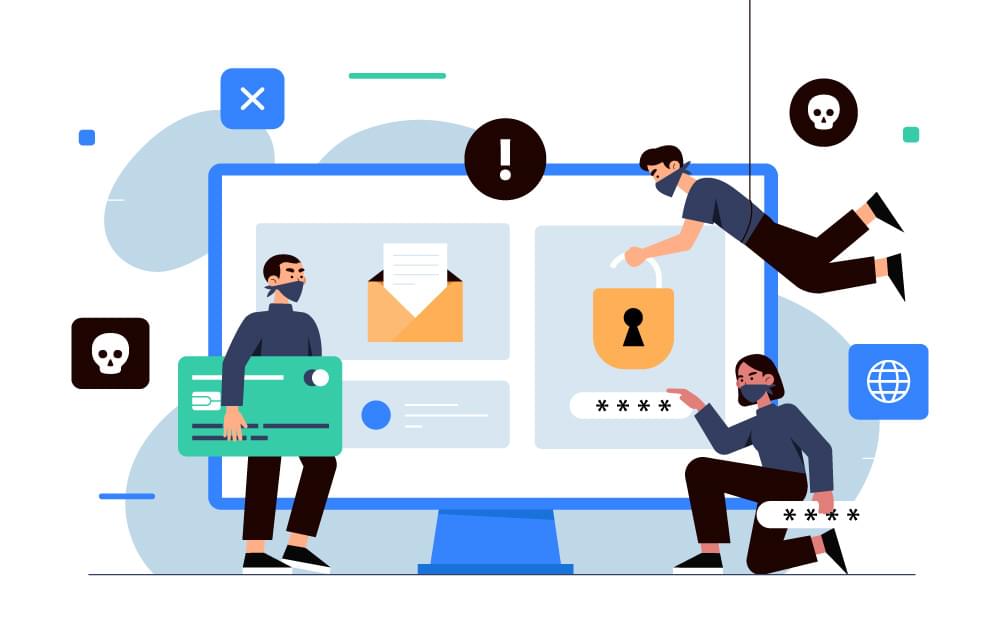10 essential best practices for remote work cyber security
With the rise of remote work, it has become increasingly important to prioritize cyber security. As more employees work from home or other remote locations, the risk of cyber threats and attacks has also increased. In this blog, we will discuss 10 essential best practices for remote work cyber security to help you protect your data, devices, and networks effectively.
How does remote work affect cybersecurity?
The shift to remote work has introduced new challenges and vulnerabilities in terms of cybersecurity. When employees work from home or other remote locations, they often use personal devices and networks that may not be as secure as those in an office environment. This makes them more susceptible to cyber attacks, such as phishing attempts, malware infections, and data breaches. Additionally, remote work often involves the use of cloud-based services and collaboration tools, which can also pose security risks if not properly managed.
Best practices for remote work security
To mitigate the risks associated with remote work, it is essential to implement the following best practices for cyber security:
- Use secure networks
When working remotely, always connect to secure networks. Avoid using public Wi-Fi networks, as they can be easily compromised. Instead, use a Virtual Private Network (VPN) like EonVPN to create a secure and encrypted connection between your device and the internet.
- Enable multi-factor authentication (MFA)
Multi-factor authentication (MFA) adds an extra layer of security by requiring users to provide multiple forms of identification before accessing their accounts. Enable MFA for all your accounts, including email, cloud storage, and collaboration tools.
- Keep software updated
Regularly update your operating system, antivirus software, and other applications to ensure that you have the latest security patches. Outdated software can contain vulnerabilities that cybercriminals can exploit.
- Strong passwords
Use strong, unique passwords for all your accounts. Avoid using common passwords or reusing passwords across multiple accounts. Consider using a password manager to securely store and generate complex passwords.
- Secure communication
When communicating with colleagues or clients, use secure channels for sensitive information. Encrypted messaging apps and email encryption can help protect your communications from being intercepted or accessed by unauthorized parties.
- Beware of phishing
Be vigilant against phishing attempts, which are often disguised as legitimate emails or websites. Avoid clicking on suspicious links or downloading attachments from unknown sources. Always verify the sender’s identity before sharing sensitive information.
- Limit access
Only grant access to the resources and data that are necessary for remote work. Regularly review and revoke access privileges for former employees or individuals who no longer require access.
- Secure devices
Ensure that your devices are protected with strong passwords or biometric authentication. Enable full-disk encryption to secure your data in case your device is lost or stolen. Regularly back up your data to a secure location.
- Regular backups
Regularly back up your data to protect against data loss due to hardware failure, theft, or cyber-attacks. Store backups in a secure location, preferably off-site or in the cloud. Test your backups to ensure their integrity and accessibility.
- Employee training
Provide comprehensive cyber security training to all remote employees using best SaaS HR software from Software Finder. Educate them about common cyber threats, best practices for secure remote work, and how to identify and report potential security incidents.
Understanding the importance of remote work cyber security
Implementing effective cyber security measures is crucial for remote work. It helps safeguard sensitive data, protects against financial loss, and maintains the trust of clients and customers. By following these best practices, remote workers can create a secure work environment and minimize the risk of cyber attacks.

Common security risks for remote working
Remote working introduces unique security risks that organizations must address. Some common security risks include:
- Insecure Wi-Fi networks: Public Wi-Fi networks are often unsecured, making them easy targets for cybercriminals.
- Phishing attacks: Remote workers are more susceptible to phishing attempts, which can lead to data breaches and financial loss.
- Device theft or loss: Remote workers are at a higher risk of losing their devices or having them stolen, potentially exposing sensitive information.
- Weak passwords: Weak or reused passwords can easily be cracked, giving attackers access to sensitive accounts and data.
Implementing network security measures for remote employees
To ensure network security for remote employees, organizations can take the following measures:
- Provide VPN access: Set up a Virtual Private Network (VPN) that remote employees can use to securely connect to the organization’s network.
- Use firewalls and antivirus software: Install firewalls and antivirus software on remote employees’ devices to protect against unauthorized access and malware.
- Monitor network activity: Implement network monitoring tools to detect and respond to any suspicious or malicious activity.
Data security tips for remote workers
To enhance data security while working remotely, consider the following tips:
- Encrypt sensitive data: Use encryption tools to protect sensitive data, both in transit and at rest.
- Use secure cloud storage: Choose reputable cloud storage providers that offer robust security measures, such as encryption and access controls.
- Secure physical storage: If you need to store physical documents or devices, ensure they are kept in a secure location, such as a locked cabinet or safe.
Solutions for ensuring cyber security while working remotely
Organizations can implement the following solutions to ensure cyber security for remote workers:
- Endpoint security: Deploy endpoint security solutions, such as antivirus software and endpoint detection and response (EDR) tools, to protect remote devices from malware and other threats.
- Secure remote access: Implement secure remote access solutions, such as VPNs and two-factor authentication (2FA), to ensure that only authorized individuals can access corporate resources remotely.
- Regular security assessments: Conduct regular security assessments to identify vulnerabilities and address them proactively.
Conclusion
Importance of cyber security in remote work is of utmost importance in today’s digital landscape. By following the 10 essential best practices discussed in this article, organizations and remote workers can mitigate the risks associated with remote work and ensure the confidentiality, integrity, and availability of their data. By prioritizing cyber security, we can create a secure remote work environment that enables productivity and protects against cyber threats. Stay vigilant, stay secure.
Stay secure, stay productive!
FAQs about remote work security
Is it possible to be 100% secure while working remotely?
Achieving 100% security while working remotely is challenging due to various factors like potential network vulnerabilities, human error, and evolving cyber threats.
What does remote work security include?
Remote work security encompasses measures to protect data, networks, and devices used for work purposes, including robust encryption, secure access controls, and employee awareness training.
What are the four main concerns of computer security?
The four main concerns of computer security are confidentiality (ensuring data privacy), integrity (preventing unauthorized alterations to data), availability (ensuring systems are accessible when needed), and authenticity (verifying the identity of users and data sources).

